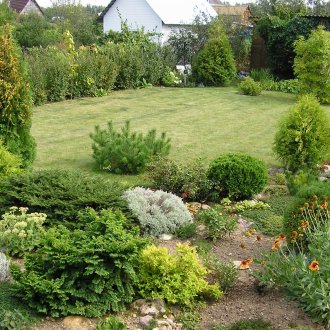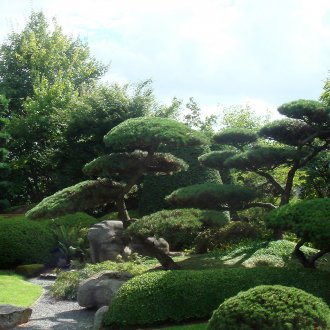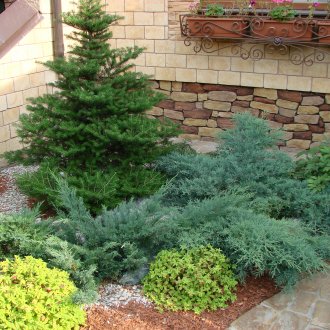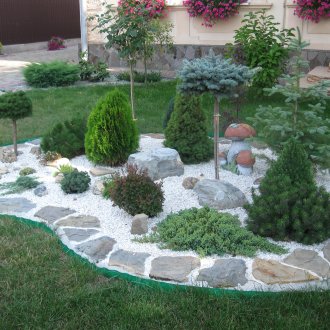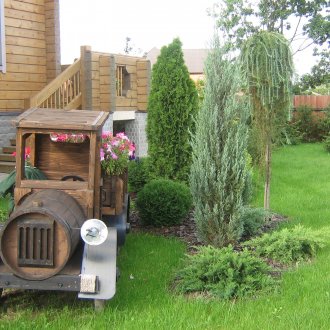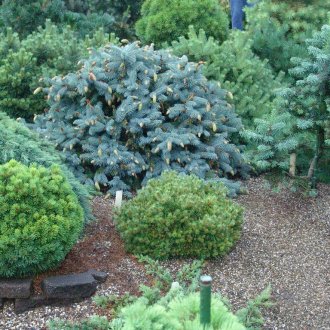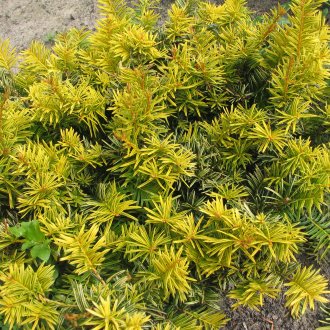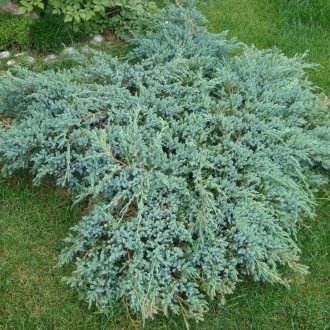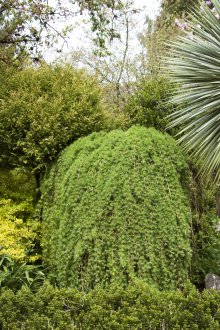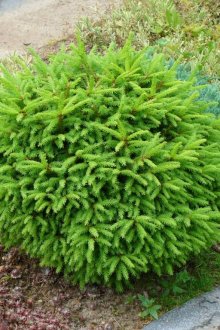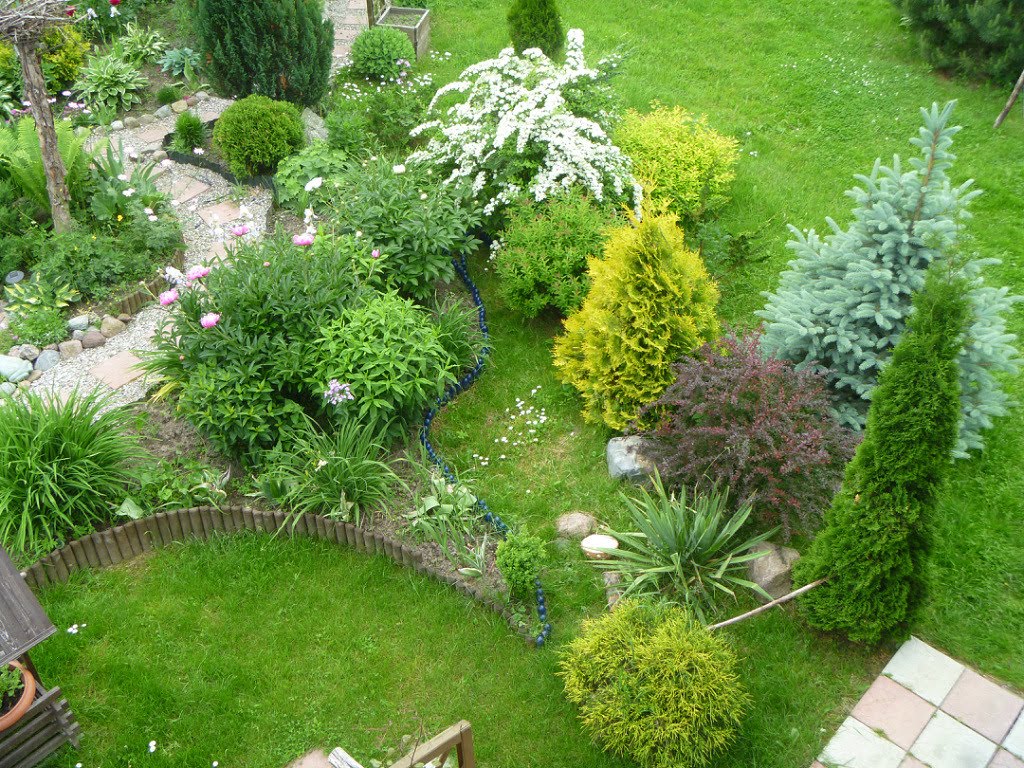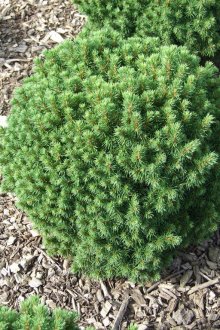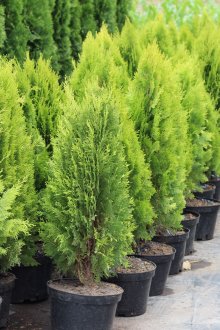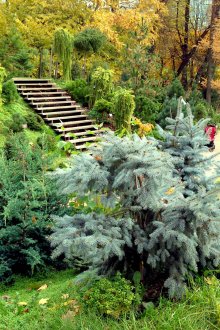Coniferous plants for the garden (18 photos): decorative decoration of the site
Content
Coniferous plants for the garden are widely used by gardeners to create original landscape design, design flower beds and grow separate beautiful compositions in parks, gardens and summer cottages.
Greening the site with coniferous plants has its advantages over the use of other landscape gardening plants:
- Coniferous species of ornamental plants give an extremely aesthetic appearance to the territory, which remains virtually unchanged year round regardless of the season.
- Coniferous plants are useful for the physical, mental and spiritual health of a person, contribute to the maximum purification and filling of the air with aromas of essential oils.
- Dwarf species and varieties of conifers have different color of needles and a crown shape, which allows you to create completely unique compositions in different parts of the territory.
- Evergreen perennial conifers and shrubs with the right selection of varieties do not require complex maintenance and care.
- Many conifers are shade-loving or shade-tolerant plants and feel great even in conditions of insufficient sunlight.
The use of conifers for landscaping
If you decide to plant conifers on your site, you need to find out what kind of conifers and shrubs are used in landscape gardening areas.
Pines, spruces and firs are planted along the main alleys and paths of gardens and parks. Junipers form hedges and create live sculptures. Dwarf conifers are used to design flower beds. Miniature varieties of conifers are suitable for growing in tubs (containers) and subsequent decoration of stony gardens, areas under the windows of houses and shores of artificial reservoirs.
In landscape design, all types and varieties of decorative conifers are used. This allows you to create compositions from perennial tall, stunted and creeping conifers, combine low dwarf tree species with miniature varieties of conifers, most effectively place conifers with various crown shapes and color of needles in the garden.
Juniper hedge in the skillful hands of gardeners becomes the best natural fence of a garden or summer cottage, and in large parks a coniferous hedge can serve as a natural material for constructing a living maze, decorate the lawn with an original sculptural composition or divide the park into different zones with grace.
Types and varieties of conifers for the garden
For the design of the territory of landscape gardening zones, the cultivation of decorative hedges and the creation of individual compositions in landscape design, such decorative conifers for the garden are used as:
- Yew (yew, torreya) - refers to shade-loving species of conifers that are predisposed to be placed in the most highly shaded areas of the garden.
- Cypress (thuja, juniper, cypress) - plants with dark green needles are shade-like species of conifers, plants with yellow needles are shade-tolerant and can be placed on sunny areas of the garden.
- Pine (spruce, larch, pine, cedar, fir) - belong to photophilous conifers, preferring well-lit sunny areas of the garden, but depending on the breed they can be shade-tolerant.
Before acquiring and planting decorative conifers and shrubs, a thorough study of the characteristics of the cultivation and care of each species of conifers in certain regions of the country is necessary. For cold regions, it is better to choose hardy species of conifers and shrubs. The most common winter-hardy varieties of conifers widely used in landscape design include:
- Fir - balsamic, subalpine, one-color, whole-leafed, Korean, white, Sakhalin, Siberian.
- Cypress - pea.
- Juniper - solid, Chinese, Virgin, ordinary, Siberian, scaly, horizontal.
- Larch - European, American, Japanese, Siberian.
- Spruce - blue, red, black, ordinary, Canadian, Siberian, prickly.
- Pine - ordinary, yellow, black, twisted, resinous, mountain, pine cedar, pine pine European and Siberian.
- Yew - berry, Far Eastern, Canadian.
- Thuja - western.
The remaining coniferous species are not frost-resistant, and because of their varietal characteristics, they are preferred for placement in the southern regions of the country with a temperate and warm climate.
Compositions of dwarf conifers
Dwarf species of conifers look especially interesting on flower beds, in compositions, both with other coniferous plants, and simply with other species of ornamental garden trees and shrubs. Miniature, stunted and creeping conifers are also widely used in landscape design, bringing completeness to every composition of living plants.
In nature, there are few dwarf species of conifers. Basically, just low species are found, and for the landscaping of garden and park areas and small summer cottages, breeding varieties of dwarf conifers are used. Low and miniature coniferous species have an extremely decorative appearance, compact size, various shape and color of needles, which allows you to create unusual and colorful compositions even on flower beds. Breeding varieties are easy to maintain and can keep their shape and miniature size for many years. Dwarf species of conifers practically do not differ from their tall counterparts, being both shade-loving (shade-tolerant) and sun-loving plants. Creeping breeds of perennial conifers are also considered dwarf due to their limited size and slow growth.
The smallest and most compact varieties of conifers can be grown in containers for subsequent decoration of small courtyards, open terraces, greenhouses, lawns or in the design of rocky gardens. Dwarf breeds are well used in compositions with ornamental-deciduous and ornamental-flowering plants, since such a combination emphasizes all the charm and unusualness of stunted conifers.
The most popular varieties of undersized conifers include:
- Dwarf spruce "Little Gem" (growth at 10 years of age 50 cm), characterized by a decorative flat-rounded spherical shape and very slow growth.
- Dwarf mountain pine "Gnom" (growth at 10 years of age 1 m), which features an original spherical shape, good frost resistance and photophilism.
- Miniature balsamic fir “Nana” (growth at 10 years of age 30 cm) with a pyramidal or narrow-conical shape, completely undemanding in care, winter-hardy, very fragrant and decorative plant.
- Miniature Korean fir “Tundra” (growth at 10 years of age 40 cm), shade-tolerant, unpretentious and possessing highly pubescent short and soft needles of bright green color.
- Western dwarf thuja “Amber Glow” (growth at 10 years of age 80 cm), which has a spherical shape with yellow-green and orange color of flat twigs.
- Dwarf cypress bastard Nana Gracilis (growth at 10 years old 80 cm), shade-loving, perennial tree with an exceptionally interesting crown shape in the form of a twisted shell and dark green, shiny and dense needles.
- Miniature gray spruce “Laurin” (growth at 10 years of age 40 cm) with a narrow-conical crown shape and small, dense needles.
- Miniature Serbian spruce "Minima" (growth at 10 years of age 25 cm), a shade-tolerant coniferous plant with densely pubescent twigs and light green needles.
- Junior vertical juniper “Blue Arrow” (growth at 10 years of age 2–3 m) with a narrow-conical shape and silver-blue non-bent needles, perfectly complementing compositions with low-growing and dwarf varieties of conifers of rounded shapes.
- Low-growing pea cypress “Filifera Sungold” (growth at the age of 10 years, about 1 m), which has the ability to change the color of the needles depending on the degree of illumination in the place of growth from bright yellow in the illuminated place to dark green in dark.
- Dwarf juniper horizontal "Alpin" (growth at 10 years of age 80 cm), easy-care decorative conifer with a beautiful bluish-green color.

